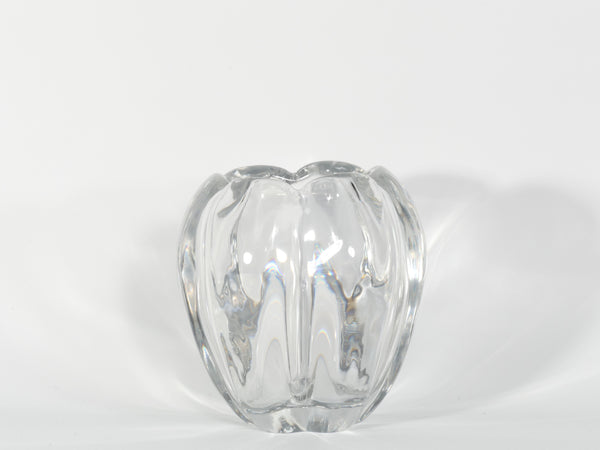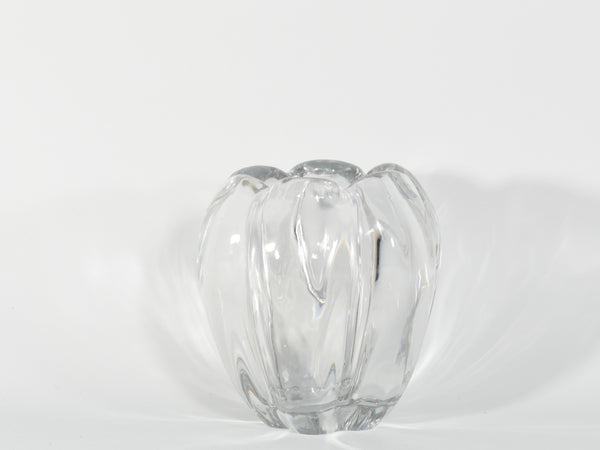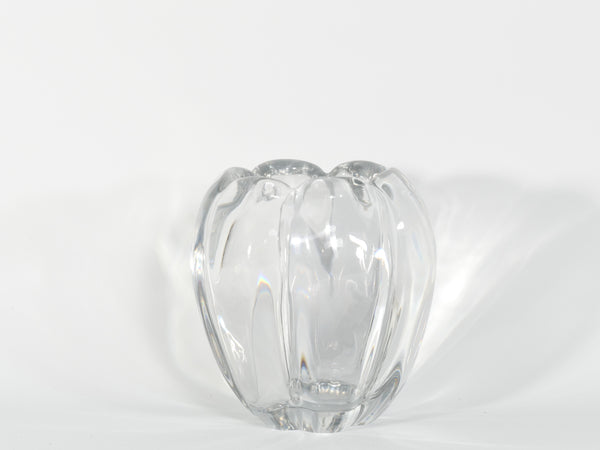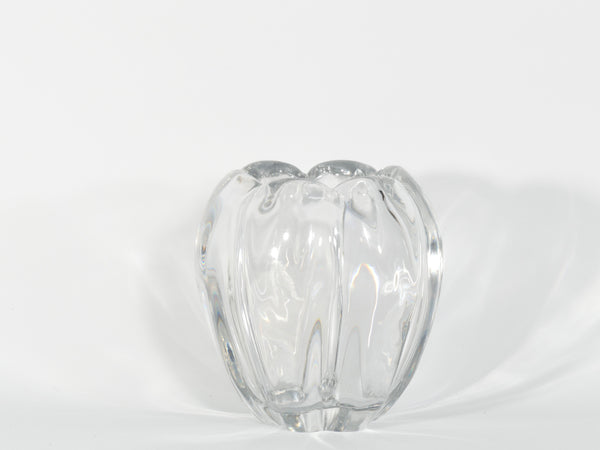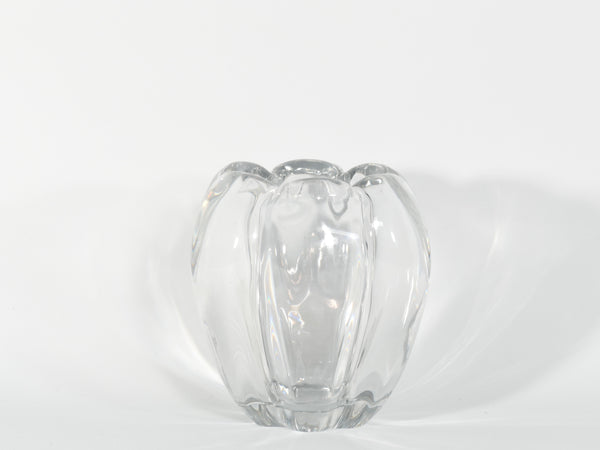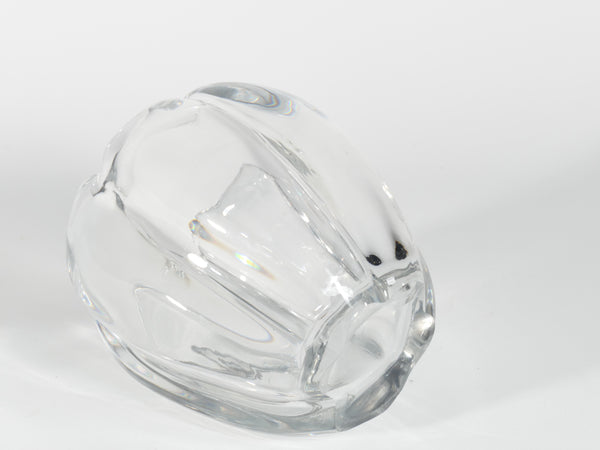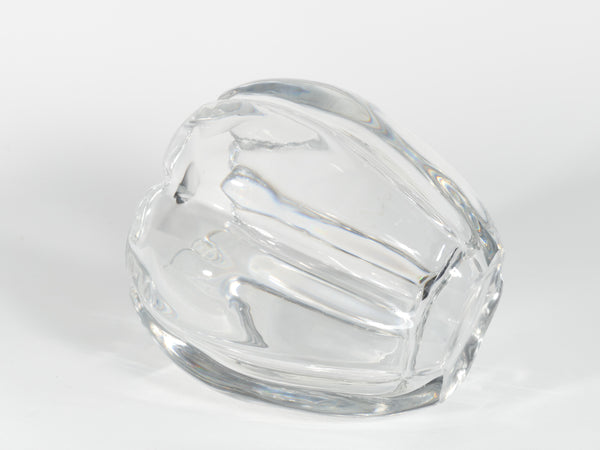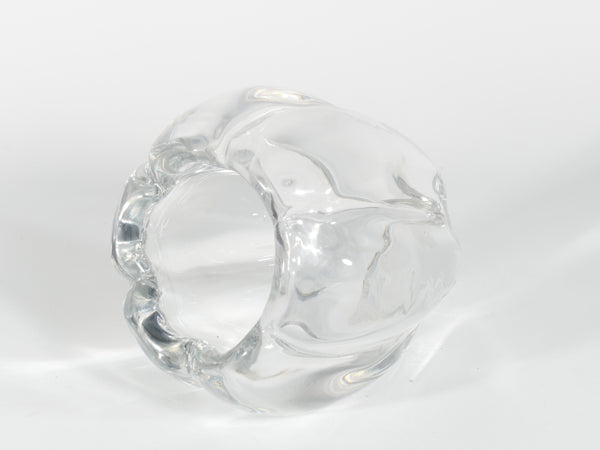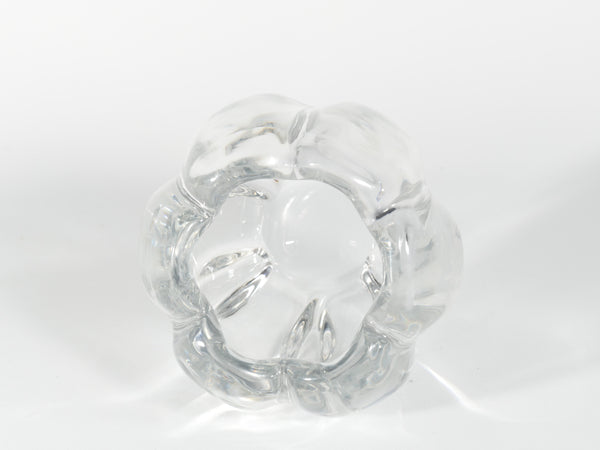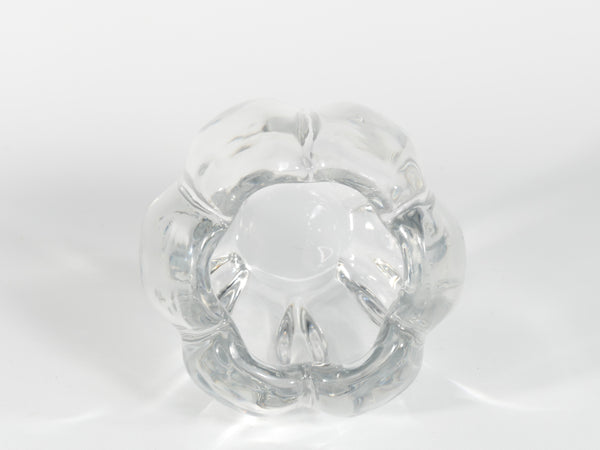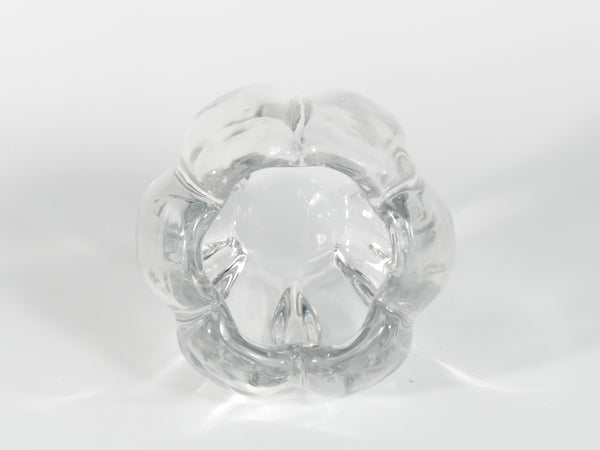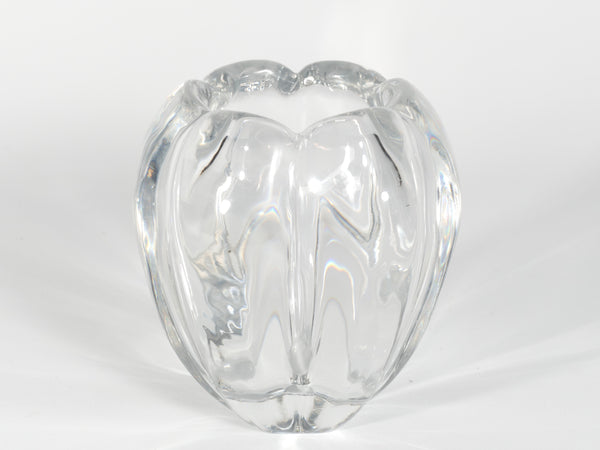The Orrefors Stella Polaris Mouth Blown Crystal Vase, designed in 1936 by Vicke Lindstrand for Orrefors, is an exquisite example of vintage art glass. This vase, with its organic star shape, is crafted from mouth-blown crystal and bears the artist's signum. True to its name, Stella Polaris (which means "North star" in Latin), due to its crystal glass, exhibits a captivating play of light, creating beautiful visual effects. It is a rare find from the late 1930s to early 1940s, characterized by its organic shape and substantial glass construction.
DIMENSIONS:
Height: 12 ,5 cm
Diameter: 12 cm
ABOUT VICKE LINDSTRAND
Vicke Lindstrand (1904-1983) was a Swedish ceramic artist and designer who played a significant role in mid-20th-century Scandinavian design. Here is some factual information about him:
-
Early Career: Lindstrand began his artistic career with a focus on drawing and ceramics. He received his formal training at Konstfack, the University College of Arts, Crafts, and Design in Stockholm.
-
Work at Orrefors and Kosta Boda: Lindstrand's career progressed as he joined renowned Swedish glassworks companies, Orrefors and Kosta Boda. At Orrefors, he made notable contributions to glass design and glassblowing. His work at Kosta Boda also had a significant impact, especially in the development of glass techniques and styles.
-
Innovations in Glass Art: Lindstrand is known for his pioneering work with graal and ariel glass techniques. Graal involves layering and carving glass to create intricate designs, while ariel glass allows for three-dimensional effects within the glass. His designs often featured modernist and organic elements, reflecting mid-century Scandinavian design principles.
-
Collaborations and Influence: Lindstrand collaborated with other prominent Swedish designers, such as Edvin Ollers and Gunnar Nylund, contributing to the evolution of Swedish glass and ceramic design. He also influenced the development of unique glazes and finishes in the field.
ABOUT CRYSTAL GLASS
Crystal glass is a high-quality type of glass that contains a significant amount of lead oxide. The presence of lead gives crystal glass several distinctive characteristics, including enhanced clarity, brilliance, and a resonant, melodious sound when struck. Some key features of crystal glass include:
-
Transparency and Clarity: Crystal glass is highly transparent and possesses exceptional clarity. This quality allows it to refract light beautifully and create brilliant, sparkling effects.
-
Weight and Feel: Crystal glass is heavier than regular glass due to its lead content. The added weight provides a luxurious and substantial feel when holding or using crystal glassware.
-
Brilliance: The lead content in crystal glass enhances its refractive properties, resulting in a higher level of brilliance and sparkle when exposed to light.
-
Sound: When gently tapped or clinked together, crystal glassware produces a distinct, resonant sound that is often associated with fine dining and special occasions.
-
Cut and Design: Crystal glass is often used for intricate cutting and engraving. The lead content allows for precise and intricate designs that can catch and reflect light in beautiful ways.
-
Durability: Despite its delicate appearance, crystal glassware is durable and resistant to chipping or scratching, making it suitable for regular use.

